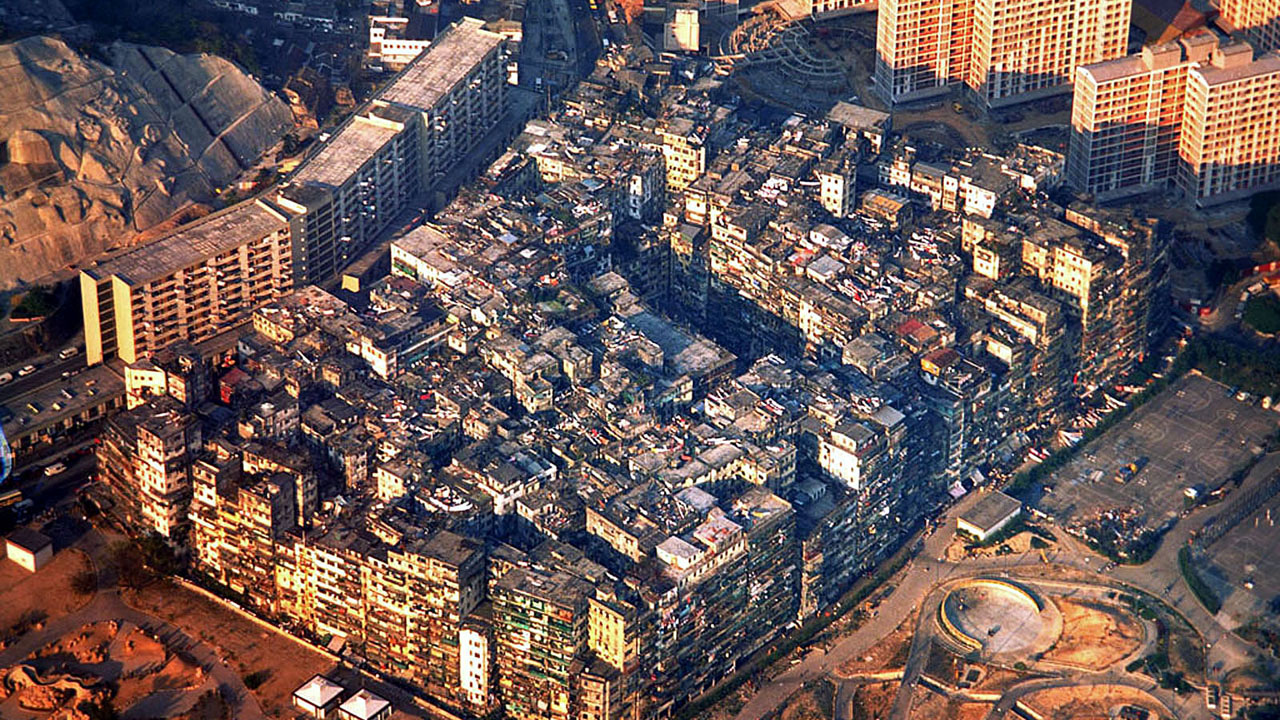Hong Kong’s Kowloon Walled City is a real place. Judge Dredd, Total Recall, Blade Runner, etc… They all borrow from what is, essentially, the world’s biggest, most compact projects, which were finally demolished twenty years ago, after two failed attempts by the Chinese government in 1947 and 1963.
Home to 40,000 people at its height, Kowloon Walled City was by far the most densely populated place on earth. On a site measuring roughly 200 by 100 metres were squeezed some 350 buildings, rising 14 storeys or more and so tightly packed there was rarely space between them. Every available nook and cranny was inhabited, while the connecting alleys, stairways and corridors were reduced to an absolute minimum.

Kowloon had no city services — no trash pick-up, no drainage or proper water. The authorities maintained a policy of “minimal involvement, to the point of making life for the residents there as difficult as possible.” The only service the authorities provided were the constant patrols of policemen who arrested and prosecuted criminals on the spot. And then, the drugs. Kowloon “was one of the few places where the very worst addicts could eke out some sort of existence without too much interference.”

Photographers Ian Lambot and Greg Girard documented this place intensely, culling a complete record from archival papers, drawings, first person interviews with people who lived and worked there decades ago. Their second book on the subject — City of Darkness Revisited, now crowdfunding on Kickstarter — goes further into the myths and mysteries.
Here’s an architectural viewpoint on this epic, epic thing.
(Images: City of Darkness, DesignBoom)



